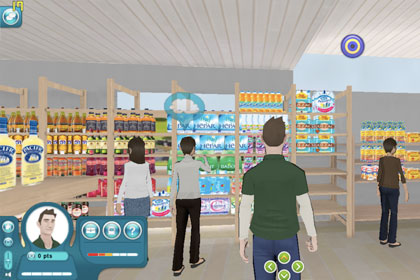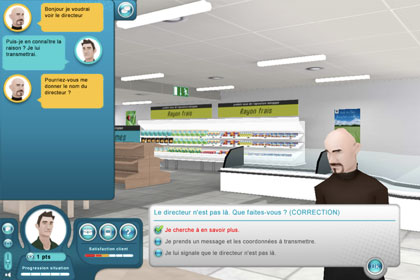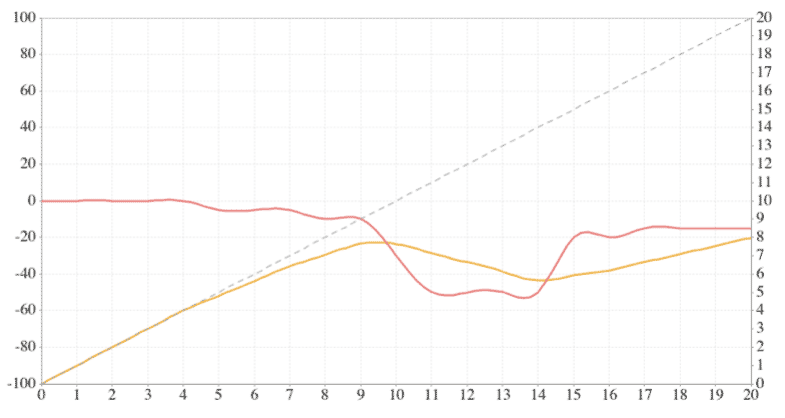Format-Store
Format-Store is a collaborative project (Idées-3Com, ENACO and LIFL) supported by a funding from the French Ministry of Research. From September 2010 to September 2011, I was local coordinator of the project in the SMAC team at LIFL, under the supervision of Pr. Philippe Mathieu and Sébastien Picault. The research presented on this page must also credit the developers Jean-Baptiste Leroy and Serge Engrand.
Context

Format-Store is a serious game aimed at training business school students to the management of a convenience store, and more particularly customer relationship management. The game features the immersion of the students in a 3d replica of a store populated with virtual customers going to their shopping. The student, acting an employee in the store, is confronted to the daily activities and the duties of a salesperson.
the game features a genuine multiagent simulation of the crowd of customers. It is based on IODA, a multiagent methodology whose originality is to focus on the interactions between the agents (the customers and the items, the shelves, the information signs, etc) in order to provide the most accurate behaviours.
Features
Multiagent simulation of the customers

The behaviours resulting from the multiagent simulation and expressed by the virtual customers are realistic, modular, adaptive and varied. From the eyes of the observer, each customer seems to follow a plan although none has been scripted by the modeller. This "intelligence without reason", quoting Rodney Brooks, emerges from the interactions of the customers with the other agents in the store (items, information signs, checkout till, player, other customers, etc.)

Expert-designed scenarios are integrated into the game by means of dialogic interactions between the player and the customers.
Each dialogue has been digitised so that it can be played within an interaction with the player. A dialogue is a branching scenario bearing three outcomes: good, satisfactory and wrong. Along their conversation with the customers, the player is evaluated accordingly.

The performance of the player is also assessed by the virtual customers themselves. Each virtual customer enters the store with a satisfaction level which decreases when the customer is upset by a situation: missing item, stain on the floor, employee unavailable, etc.
When the customer exits the store, the satisfaction loss reflects the overall state of the store, and thereby the performance of the player.
Evaluation and adaptive difficulty
A performance analyser is responsible for collecting the satisfaction levels of every customer getting out from the store. Based on these values, the difficulty level can be deemed too high and is therefore adjusted by the game manager, in order to keep the player in their zone of proximal development. In practice, the difficulty in Format-Store is tied to the number of customers in the store at the same time.
The graph below demonstrates how a loss in performance (red curve) is taken into account by limiting the number of customers in the store (orange curve), enabling the player to get back to grips with the game and carry on learning without frustration.
